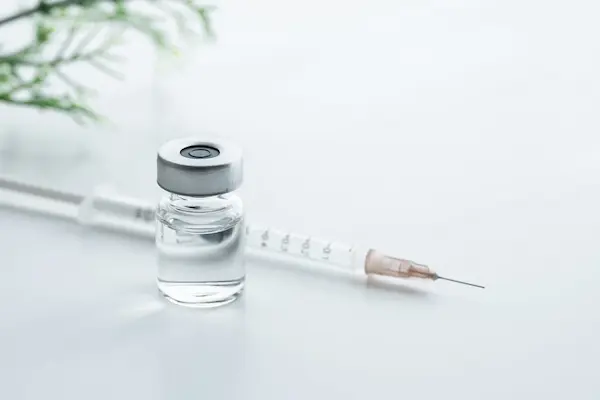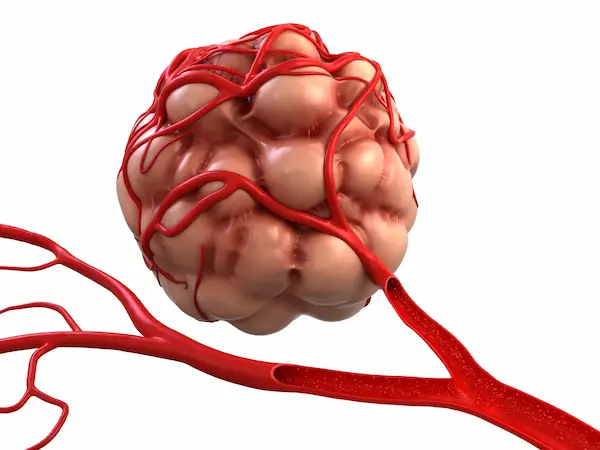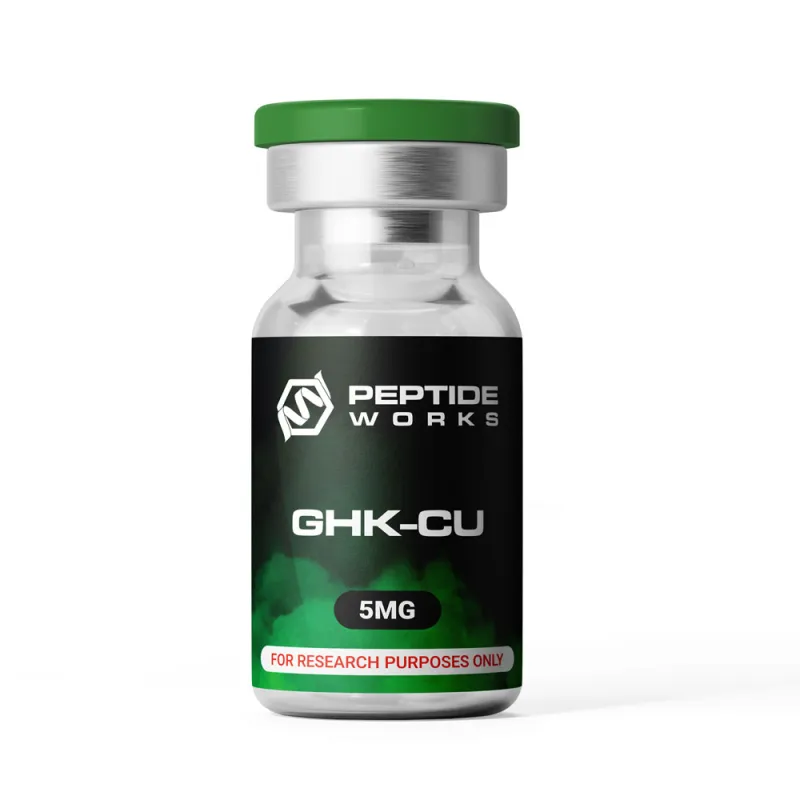
PROMO!
First order? Get 10% OFF with this code: 1storder
Written by

TB500 and BPC-157 are often compared because both appear in studies on healing and repair. Yet their roles are not the same. TB500, a fragment linked to thymosin beta-4 and composed of specific amino acids, is explored for how it may guide cell movement and support the growth of new blood vessels. BPC-157, short for Body Protection Compound, is a naturally occurring peptide studied for its effects on tendons, gut health, and vascular recovery.
These differences make researchers look at them side by side to see which pathways each one affects most. By focusing on how they act in separate systems, it becomes easier to see why both peptides continue to draw interest in research settings on recovery and repair.
With that in mind, one area that both peptides connect to is the formation of new blood vessels. Understanding this helps explain why angiogenesis often appears at the center of research discussions.
Discover TB500 from Peptide Works, a peptide studied for its potential role in guiding cellular ingress and supporting wound healing research.

Studies exploring TB500 and BPC-157 often focus on how they may trigger vascular changes. Research on TB500 suggests it could raise levels of VEGF (vascular endothelial growth factor), a signal that promotes capillary growth and faster perfusion of nutrients to damaged areas. This process, known as vascular remodeling, is one reason TB500 appears in discussions on wound and muscle repair.
BPC-157 shows a different pattern. Reports suggest it interacts with nitric oxide pathways and acts as a protective protein, helping endothelial cells stay open and functional. These effects point to stability more than rapid growth. Because angiogenesis plays a role in both healing and chronic inflammation and may relate to chronic pain mechanisms, it remains a key point of comparison between these two peptides in research. Some findings note a synergistic effect in the combination of BPC and TB500 under controlled conditions, revealing meaningful ways peptides influence tissue adaptation.
Angiogenesis, however, is only one piece of the puzzle. Another major area where researchers pay close attention is tendon recovery, where BPC-157 has shown unique activity.
Explore BPC-157 from Peptide Works, a synthetic peptide researched for its effects on tendon repair, gut lining protection, and vascular stability.
Research on TB500 and BPC-157 highlights a unique role for BPC-157 in tendon repair. Studies suggest that it may activate pathways that enhance tendon outgrowth, enabling damaged fibers to extend and reconnect more effectively. By supporting cell survival in stressed tissue, BPC-157 helps maintain the building blocks needed for repair.
Findings also note its influence on functional attachment, where new tendon tissue bonds more securely with surrounding structures. This tendon-specific focus sets it apart from TB500, which is studied more for its broad effects on other systems. Together, the two peptides show distinct but complementary roles in early animal studies and preclinical data.
While tendons draw much attention, the digestive system is another area where BPC-157 research has produced notable findings.

Research often highlights BPC-157 for its role in the digestive tract. Studies suggest it helps restore the gut lining by improving mucosal integrity and supporting epithelial regeneration, even in the presence of human gastric juice in experimental models. In models of ulcers and intestinal lesions, BPC-157 has been linked to faster closure rates and reduced irritation, making it a focus in gastrointestinal studies.
When comparing TB500 and BPC-157, the difference becomes clear. TB500 is explored more for cell movement and vascular growth, while BPC-157 stands out in gut repair research. Some findings also connect these effects to peptides like GHK-Cu, which is studied for tissue regeneration and wound healing across multiple systems.
This brings us to TB500’s own standout role in repair research, where its influence on actin regulation sets it apart.
Researchers study TB500 for its role in cell migration, a key step in healing. This peptide binds to actin, reshapes the cell’s structure, and drives it forward. Cells push into gaps, close wounds, and prepare the area for new growth. By directing movement in this way, TB500 sets the pace for recovery and the healing of muscles at the injury site.
Studies also show that TB500 reorganizes the cytoskeleton more quickly. Cells extend, grip, and advance with greater control. These steady movements allow tissue to rebuild layer by layer. In research on TB500 and BPC-157, TB500 stands out for its strong link to migration mechanics and inflammation control during tissue remodeling.
While TB500 excels in driving cell migration, another peptide GHK-Cu shows its value in tissue regeneration through a very different path.

GHK-Cu is a naturally occurring protein complex studied for its ability to support collagen synthesis, reduce inflammation, and improve skin and wound healing. Research shows it activates repair genes, protects tissues from oxidative stress, and helps restore a healthy environment for regeneration. These actions make it a frequent subject in studies on skin health and recovery.
Scientists often evaluate GHK-Cu alongside TB500 and BPC-157 because each peptide influences different repair targets. While GHK-Cu draws attention for its role in skin and connective tissue renewal, TB500 and BPC-157 remain central in research on deeper injury models. Together, they broaden the view of injury treatment in peptide-driven healing.
When all three peptides are viewed together, their differences become clearer and their complementary roles stand out even more.
Shop GHK-Cu from Peptide Works, a copper peptide linked to collagen production, skin renewal, and tissue regeneration in scientific studies.
Researchers compare GHK-Cu, TB500 and BPC-157 to understand how each peptide drives repair for different purposes across biological systems. GHK-Cu activates repair-related genes, balances copper levels, and boosts collagen in skin and connective tissue. TB500 directs the cytoskeleton, allowing cells to extend, align, and close gaps during repair.
BPC-157 protects the gut lining and strengthens tendon-to-bone connections, keeping tissue stable under stress. These observations are supported by current evidence from animal models.
Together, these peptides show complementary actions. Each one drives unique pathways, but when studied side by side, they reveal a broader picture of how peptide research continues to expand in healing science.
| Peptide | Primary Research Focus | Notable Research Insights |
|---|---|---|
| GHK-Cu | Skin and connective tissue renewal | Activates repair genes, balances copper, boosts collagen remodeling |
| TB500 | Cell migration and cytoskeleton control | Directs cell alignment, improves traction, speeds wound closure |
| BPC-157 | Gastrointestinal and tendon healing | Protects gut lining, stabilizes tendon-to-bone junctions, improves barrier strength |
Each peptide offers a distinct contribution, but the future of this research field suggests their combined study may provide even deeper insights into muscle recovery and ligament repair.
Peptide research continues to advance as studies examine TB500 and BPC-157 alongside GHK-Cu. Each peptide plays a unique role, from promoting cell migration and vascular support to aiding gut lining repair and collagen renewal. Together, they demonstrate how peptides contribute to the evolving field of regenerative science through meaningful ways that expand our understanding of different mechanisms in healing.
At Peptide Works, we support this growth by providing high-quality research peptides to researchers and laboratories worldwide. By offering reliable materials strictly for scientific use, Peptide Works helps labs explore new possibilities in healing and recovery. GHK-Cu, TB500 and BPC-157 remain central to these ongoing studies.
All products discussed are supplied for research purposes only and are not intended for human use.
[1] Jo JO, Kim SR, Bae MK, Kang YJ, et al. Thymosin β4 induces the expression of vascular endothelial growth factor (VEGF) in a hypoxia-inducible factor (HIF)-1α-dependent manner. Biochim Biophys Acta. 2010 Nov;1803(11):1244-51.
[2] Chang CH, Tsai WC, Lin MS, Hsu YH, et al. The promoting effect of pentadecapeptide BPC 157 on tendon healing involves tendon outgrowth, cell survival, and cell migration. J Appl Physiol (1985). 2011 Mar;110(3):774-80.
[3] Hsieh MJ, Lee CH, Chueh HY, Chang GJ, et al Modulatory effects of BPC 157 on vasomotor tone and the activation of Src-Caveolin-1-endothelial nitric oxide synthase pathway. Sci Rep. 2020 Oct 13;10(1):17078.
[4] Pickart L, Margolina A. Regenerative and Protective Actions of the GHK-Cu Peptide in the Light of the New Gene Data. Int J Mol Sci. 2018 Jul 7;19(7):1987.
[5] Smart N, Rossdeutsch A, Riley PR. Thymosin beta4 and angiogenesis: modes of action and therapeutic potential. Angiogenesis. 2007;10(4):229-41.
[6] Chang CH, Tsai WC, Hsu YH, Pang JH. Pentadecapeptide BPC 157 enhances the growth hormone receptor expression in tendon fibroblasts. Molecules. 2014 Nov 19;19(11):19066-77.
ALL CONTENT AND PRODUCT INFORMATION AVAILABLE ON THIS WEBSITE IS FOR EDUCATIONAL PURPOSES ONLY.
DISCLAIMER: These products are intended solely as a research chemical only. This classification allows for their use only for research development and laboratory studies. The information available on our Peptide Works website: https://peptide-works.com/ is provided for educational purposes only. These products are not for human or animal use or consumption in any manner. Handling of these products should be limited to suitably qualified professionals. They are not to be classified as a drug, food, cosmetic, or medicinal product and must not be mislabelled or used as such.
Peptide Works
Related Articles

How effective could Orexin Addiction Therapy be?
Have you ever wondered why some people find it so hard to stop addictive habits, even when they truly want

Can NAD Therapy Improve Cognitive Performance?
NAD Therapy is gaining attention in research for its possible role in brain health. NAD+ (nicotinamide adenine dinucleotide) is a

Enhancing Energy with NAD+ Supplements
Energy is the driving force behind focus, movement, and recovery. When cells have less energy to work with, the body